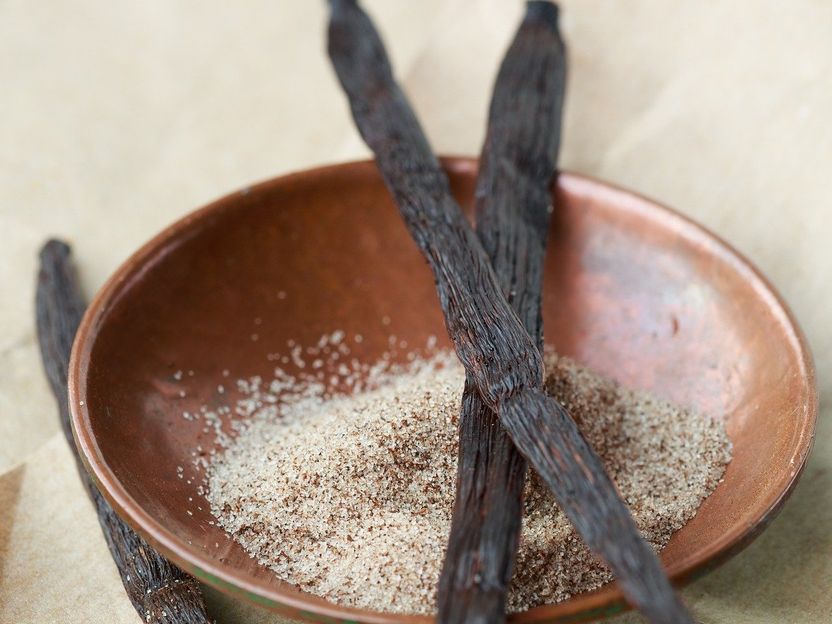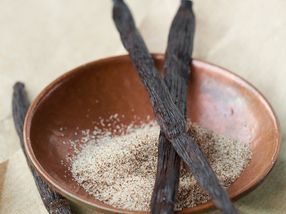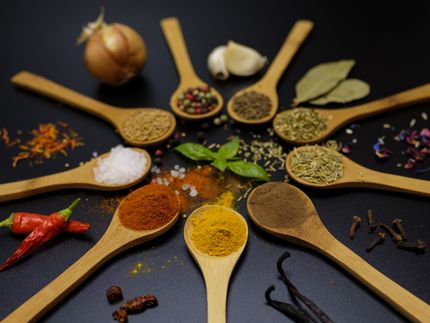Sustainable method for obtaining vanillin from wood waste
Vanillin is the world's most important flavouring agent in terms of volume
Advertisement
Scientists at Johannes Gutenberg University Mainz (JGU) have developed a new, sustainable method for extracting the aroma substance vanillin from the wood component Lignin, which is produced in large quantities as waste in the manufacture of cellulose, an important raw material in paper production. As the researchers describe in the journal "ACS Sustainable Chemistry & Engineering", they add lignin to caustic soda, heat the mixture to 160 degrees and apply electricity to it in a simple electrolysis cell using nickel electrodes. This oxidizes and decomposes the lignin, producing vanillin of such high quality that it can be declared as "natural vanillin". "After years of intensive research, we have thus achieved a real breakthrough," says Prof. Dr. Siegfried Waldvogel, spokesperson of the top research area "SusInnoScience" (Sustainable Chemistry as the Key to Innovation in Resource-efficient Science in the Anthropocene) at JGU, who led the development. Up to now, vanillin has been obtained mainly from crude oil, and in contrast to the new method, toxic waste is produced that is difficult to dispose of. Admittedly, there is already a process for producing vanillin from lignin. However, according to Waldvogel, this is very expensive, among other things because of the use of copper. In addition, only a small part of the lignin produced in the pulp production process can be used for this.
Vanillin is the world's most important flavouring substance in terms of quantity. Several tens of thousands of tonnes of it are used every year in the production of food, cosmetics and medicines. Lignin in turn produces more than 100 million tonnes of waste from pulp production each year, most of which is then incinerated. "Since our method has a vanillin yield of around four per cent of the lignin used, it would theoretically be very easy to cover the worldwide demand for vanillin," said Waldvogel. He is convinced that the new method is "significantly better" than previous methods for the extraction of vanillin - not only because it does not generate toxic waste, but also because it is economically superior - and is already holding talks with relevant industrial partners. Within the framework of the EU "LIBERATE" project, the process, which has so far only been used in the laboratory, is soon to be tested on a larger scale. A pilot plant is currently being built for this purpose at the Norwegian research institute SINTEF, with which JGU is cooperating. In addition, Waldvogel also plans to test whether the new method can be further improved by obtaining vanillin not only from pure lignin, but directly from the so-called black liquor, a preliminary product containing lignin that is produced during the processing of wood in cellulose factories.

gate74/Pixabay

Electrolysis cell developed at JGU for the extraction of vanillin from lignin
Michael Zirbes, JGU


Note: This article has been translated using a computer system without human intervention. LUMITOS offers these automatic translations to present a wider range of current news. Since this article has been translated with automatic translation, it is possible that it contains errors in vocabulary, syntax or grammar. The original article in German can be found here.


























































